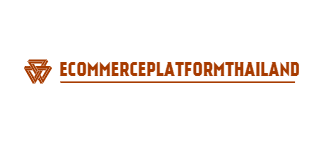In the realm of business, a compelling statistic is that organizations can significantly elevate their strategic positioning and operational effectiveness through a keen focus on internal resources. Internal resources encompass a company’s assets, capabilities, processes, and information that are owned or controlled, playing a crucial role in achieving strategic objectives and supporting daily operations. This blog post delves into the essence of these resources and outlines a six-step approach to harness them effectively for business success.
Understanding the Importance of Internal Resources for Business Success
Before diving into the steps, it’s essential to grasp the significance of internal resources in business success.
Defining Strategic Capabilities and Core Competences
Strategic capabilities and core competencies form the foundation of a business’s competitive edge. These are the unique strengths that distinguish a company in the market and contribute to its long-term success.
- Identifying Key Capabilities: Pinpointing the unique abilities that set your business apart.
- Building on Core Competencies: Focusing on strengths that offer a competitive advantage.
- Continuous Improvement: Regularly evaluating and upgrading these capabilities.
By clearly defining and continuously enhancing strategic capabilities and core competencies, businesses can build a robust foundation for sustainable competitive advantage.
The Role of Threshold Resources and Competences
Threshold resources and competencies are the basic requirements for a company to operate in a particular market. They are essential for survival but do not necessarily provide a competitive edge.
- Understanding Market Standards: Recognizing the minimum resources needed for market entry.
- Aligning with Industry Benchmarks: Ensuring that your business meets or exceeds these basic requirements.
- Maintaining Operational Efficiency: Keeping threshold resources and competences updated and efficient.
Effectively managing threshold resources and competences is vital for maintaining a competitive position in the market and setting the stage for advanced strategy technology development.
Utilizing Unique Resources for Competitive Advantage
Unique resources are those distinct elements that give a business a significant advantage over competitors. These can range from proprietary technologies to exclusive partnerships.
- Identifying Unique Assets: Discovering what exclusive resources your business possesses.
- Leveraging Unique Skills and Relationships: Using these unique elements to create a market advantage.
- Protecting and Developing Unique Resources: Ensuring these resources remain exclusive and continue to provide value.
Capitalizing on unique resources effectively can lead to substantial competitive advantages, positioning a business as a leader in its industry.
6 Steps to Effectively Harness Your Business’s Internal Resources
With a thorough understanding of the types of Internal resources, we can now explore the steps to effectively harness them.
Step 1: Conducting a Resource Audit to Identify Strengths and Weaknesses
A resource audit is a comprehensive evaluation of a company’s available resources. It helps in identifying strengths to capitalize on and weaknesses that need to be addressed.
- Inventory of Resources: Listing all physical, human, financial, and intangible assets.
- Assessing Resource Quality: Evaluating the effectiveness and efficiency of these resources.
- Identifying Gaps and Opportunities: Spotting areas where resources are lacking or can be improved.
Conducting a thorough resource audit is a critical first step in understanding and optimizing the internal resources of a business. SmartOSC provides comprehensive digital solutions that can help in auditing and assessing your company’s resources. We have expertise in cloud, including cloud audits, which can be instrumental in evaluating your company’s technological resources and identifying gaps and opportunities.
►►►► Please visit our products: Magento POS, BigCommerce POS, Shopify POS, Woocommerce POS, NetSuite POS, Mobile POS, White label POS, Reseller POS, POS System for Retail and Commercetools POS
Step 2: Evaluating Human Resources and Their Impact on Performance
Moving from assessment to the human aspect, let’s look at the role of human resources in business performance. Human resources are often the most crucial asset of any organization. Their evaluation is pivotal in understanding the impact of workforce skills, experiences, and motivation on overall performance.
- Skills and Experience Analysis: Assessing the qualifications and experience levels of the workforce.
- Motivation and Productivity Assessment: Understanding the drivers of employee motivation and their impact on productivity.
- Training and Development Needs: Identifying areas for skill enhancement and professional growth.
By effectively evaluating and managing human resources, businesses can significantly enhance their performance and productivity, leading to greater success.
Step 3: Assessing Financial Resources for Strategic Investments
From the human element, we transition to the financial backbone of the business. Financial resources are vital for the strategic growth and operational scale of a business. Assessing these resources is crucial for informed decision-making and strategic planning.
- Financial Health Analysis: Reviewing financial statements to understand the company’s financial position.
- Capital Allocation: Determining how to best allocate resources for growth and sustainability.
- Investment Opportunities: Identifying areas for strategic investment that align with business goals.
An accurate assessment of financial resources enables businesses to make strategic investments and decisions, fueling growth and long-term sustainability. Next, we turn our attention to the management of physical and technical capabilities.
Step 4: Managing Physical Resources and Technical Capabilities
Physical resources and technical capabilities are key elements in a company’s operational efficiency. Managing these resources effectively is crucial for smooth and efficient business operations.
- Infrastructure and Equipment Management: Ensuring that physical assets are maintained and utilized efficiently.
- Technological Advancements: Keeping up with technological developments and integrating them into business operations.
- Resource Optimization: Maximizing the use and efficiency of physical and technical resources.
Effective management of physical resources and technical capabilities can significantly enhance operational efficiency and productivity.
Step 5: Structuring Organizational and Operational Processes
As we focus on infrastructure, let’s also consider how organizational and operational processes play a role. Organizational and operational processes are vital for the smooth functioning of a business. Structuring these processes efficiently is key to achieving agility and operational excellence.
- Process Streamlining: Simplifying and optimizing business processes for efficiency.
- Enhancing Communication: Facilitating better communication and coordination across departments.
- Continuous Improvement Culture: Fostering an environment that encourages ongoing process refinement.
Well-structured organizational and operational processes not only improve efficiency but also create a culture of continuous improvement and adaptability. SmartOSC’s experience in enterprise process automation and digital transformation can help in structuring your organizational processes. Our solutions in workflow digitization and Robotic Process Automation (RPA) can streamline business operations, fostering a culture of continuous improvement and efficiency.
Step 6: Differentiating Your Business with Unique Selling Propositions
Finally, let’s explore how unique selling propositions can differentiate a business in the market. Unique Selling Propositions (USPs) are the factors that set a business apart in the marketplace. Developing strong USPs is crucial for differentiation and attracting customers.
- Identifying USPs: Determining what makes your business unique in the eyes of customers.
- Market Positioning: Strategically positioning your business based on these unique aspects.
- Branding and Marketing: Leveraging USPs in branding and marketing efforts to attract and retain customers.
By identifying and effectively communicating its USPs, a business can distinctly position itself in the market, attracting a loyal customer base and achieving greater success.
Conclusion
Harnessing internal resources effectively is critical for any business aiming for long-term success. By understanding and implementing these six steps, businesses can optimize their internal capabilities, differentiate themselves in the market, and set a solid foundation for growth and excellence.
For expert guidance on optimizing your business’s internal resources, contact us at SmartOSC. Our team specializes in developing customized solutions that drive growth, efficiency, and competitive advantage.
Source: https://www.smartosc.com/internal-resources/
►►►► Our related services: low code platforms, cloud networking, adobe marketing cloud, IT jobs in Vietnam, partner strategy for ai, digital customer experience strategy, digital transformation, core banking platforms, agentic ai companies, phần mềm quản lý doanh nghiêp, nền tảng quản trị doanh nghiệp, phần mềm nhân sự, phần mềm chấm công, phần mềm tính lương, phần mềm KPI, phần mềm OKR, Phần mềm quản lý dự án, App chấm công, Cách tính lương, Ftrip Viet Nam, vietnam itinerary 2 weeks, north vietnam 2 week itinerary, northern vietnam 2 week itinerary, vietnam luxury tours, custom travel itinerary, best tour operators in vietnam, Vietnam Photography Tour, Photography Tour Guide Viet Nam

